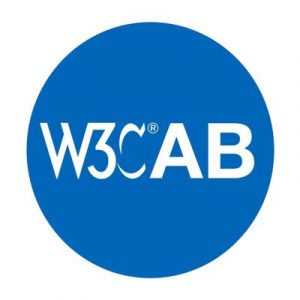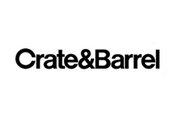
Is W3 compliance a requirement for your website to be successful?
If you want your website to rank higher on Google, Bing, and Yahoo, make sure it is W3C validated. This will ensure that your website is more optimized for search engine algorithms and improve your visibility in the search results.
Conversely, if you overlook validating your website’s pages with W3C standards, the errors will likely result in decreased traffic, poor user experience, and as the result of slow page load speed.
Let us start by explaining what is meant by W3 compliance. W3 compliance is an array of standards and rules created to guarantee that websites adhere to established web design principles. It was created by the World Wide Web Consortium (W3C), an international organization that sets standards for online technologies, including HTML and CSS. W3 compliance helps maintain a website’s SEO rankings by ensuring its content is accessible to all web browsers and devices and improving its compatibility with various search engines. While it is not a requirement for every website, implementing specific W3 guidelines can help boost your website’s rankings in search engine results pages (SERPs).
Ensure that your website is optimized for maximum compatibility with all browsers by adhering to W3 compliance, guaranteeing a better user experience.
Web browsers are extremely versatile and will typically display your website regardless of how many mistakes the validation tool identifies. This is due to their ability to quickly interpret a wide array of HTML/CSS codes. While breaking the rules may get your website to work in the web browsers, web crawlers won’t be able to access the information on your website correctly. This means that search engine rankings will suffer since they won’t be able to index the content properly, thus decreasing visibility in the SERPs.
Staying compliant with W3 standards is essential for SEO success
 Unfortunately, it is a widespread belief that search engine crawlers only rank sites higher in the SERPs if their code is 100% W3C compliant. It is important to have a sound blueprint in place when building out your website to avoid repeating errors over and over as your website grows over time. Correcting these errors can be a costly endeavor for businesses. Crafting fully compliant HTML and CSS code should be the aim when constructing or fixing existing web pages. Not only will this make future changes easier to construct your website, but any changes you make to future stylings and page creation will be a major time-saver! Doing so makes it simpler for search engine crawlers to recognize what a webpage contains and its implications due to your preparation and compliance. Compliance is essential if you want your page to rank higher in search engines!
Unfortunately, it is a widespread belief that search engine crawlers only rank sites higher in the SERPs if their code is 100% W3C compliant. It is important to have a sound blueprint in place when building out your website to avoid repeating errors over and over as your website grows over time. Correcting these errors can be a costly endeavor for businesses. Crafting fully compliant HTML and CSS code should be the aim when constructing or fixing existing web pages. Not only will this make future changes easier to construct your website, but any changes you make to future stylings and page creation will be a major time-saver! Doing so makes it simpler for search engine crawlers to recognize what a webpage contains and its implications due to your preparation and compliance. Compliance is essential if you want your page to rank higher in search engines!
What if my website is not 100% W3 compliant?
Shoddy code is a huge no-no, but it is not the end of the world for your website. Adhering to the standards set by W3C validation errors is an absolute must for any website owner, as hundreds of unchecked errors can be disastrous for your rankings in the SERPs. While a 100% W3 compliant score may be extremely hard to achieve for some website owners without causing huge expenses, there is always room for improvement. Any website owner can make a massive impact on their SEO just by improving the W3 compliance score of their website.
Overall, W3 compliance is not a requirement for a website to be successful, but it can certainly help boost its SEO rankings. While 100% W3-compliant websites may be difficult and costly to achieve, any improvement in the W3 score of your website could have an immense impact on your search engine rankings. To ensure that you get the most out of your website’s SEO efforts, adhere to W3 standards when constructing or fixing web pages. This will allow web crawlers to recognize what each webpage contains and its relevance more efficiently, leading to higher SERP rankings!
Let us look at another factor impacting businesses: WAI (Web Accessibility Initiative), and why you should not overlook its importance
This is a new movement aimed at websites and web tools that are designed and coded for people with disabilities can use them. Several websites and tools are currently developed with accessibility constraints that make them extremely hard or unreachable for some users. The initiative aims to provide the required guidelines for achieving this goal.
The initiative is essential for developers and organizations always to be mindful when creating high-quality websites and web tools and not exclude people from using their products and services.
Web accessibility is an imperative and necessary requirement to ensure that everyone, regardless of disability or impairment, can effectively access the web. This includes but is not limited to the following:
- Auditory
- Cognitive
- Neurological
- Physical
- Speech
- Visual
Not only do people with disabilities benefit from web accessibility measures, but those without disabilities can also reap the rewards. Here are additional advantages that these practices provide:
- People using mobile phones, smart watches, smart TVs, and other devices with small screens, different input modes, etc
- Older people with changing abilities due to aging
- People with “temporary disabilities” such as a broken arm or lost glasses
- People with “situational limitations,” such as in bright sunlight or in an environment where they cannot listen to audio
- People using a slow Internet connection or who have limited or expensive bandwidth
Embracing accessibility not only benefits users but is a smart business decision. Designing with accessibility in mind can maximize user experience and satisfaction for all types of devices and older users. Beyond that, it can also strengthen your brand image, catalyze innovation, and expand the scope of potential markets you can reach.
Please remember that Web accessibility is a requirement by law in many situations. Find guidance on determining legal requirements in the archived Legal and Policy Factors on the W3.org website.












